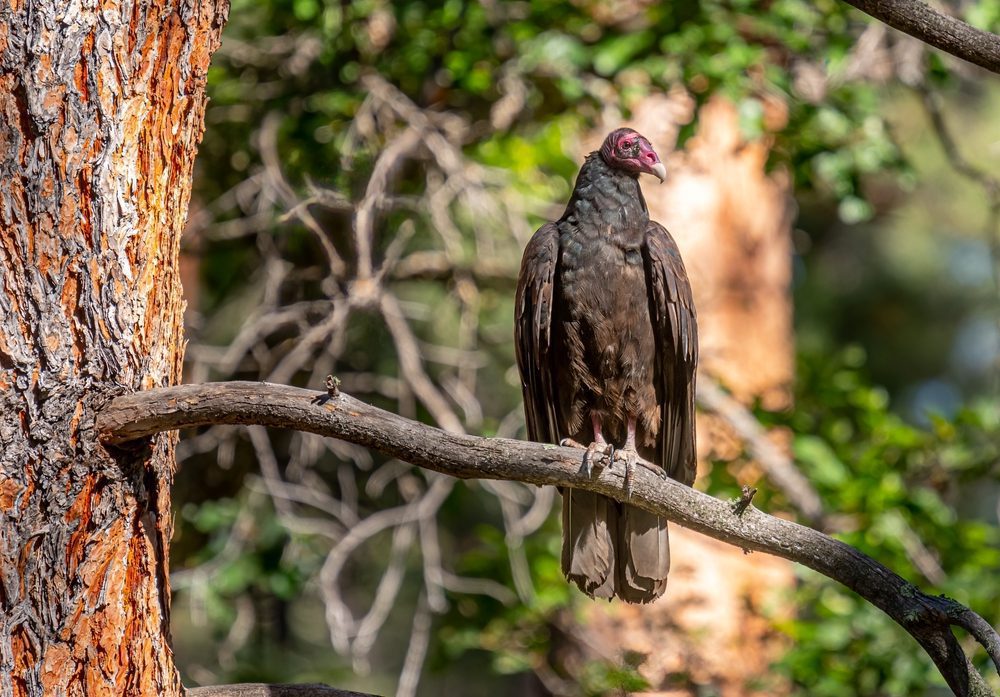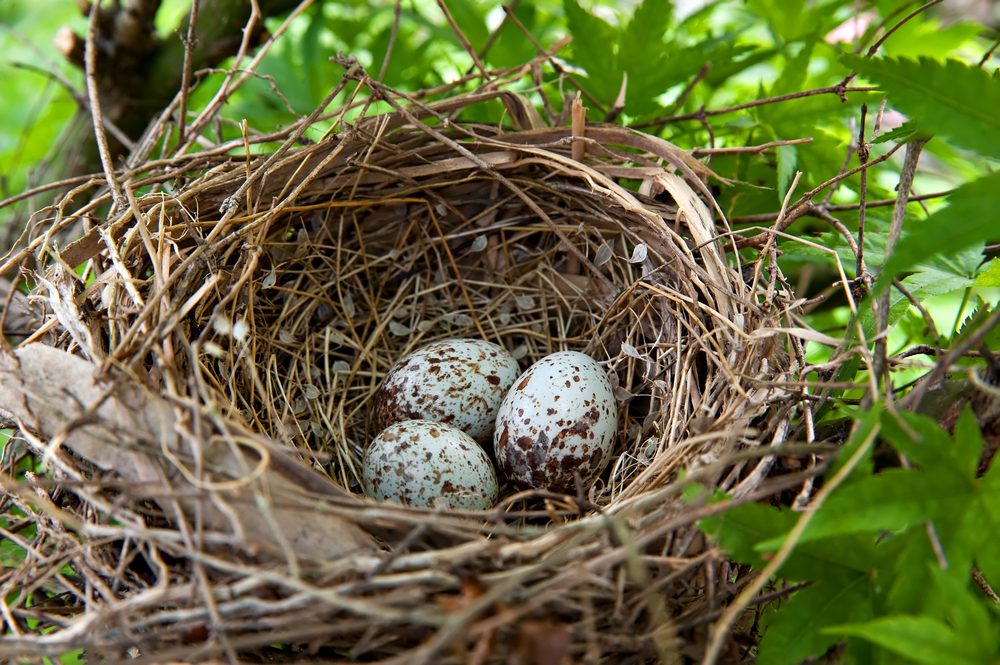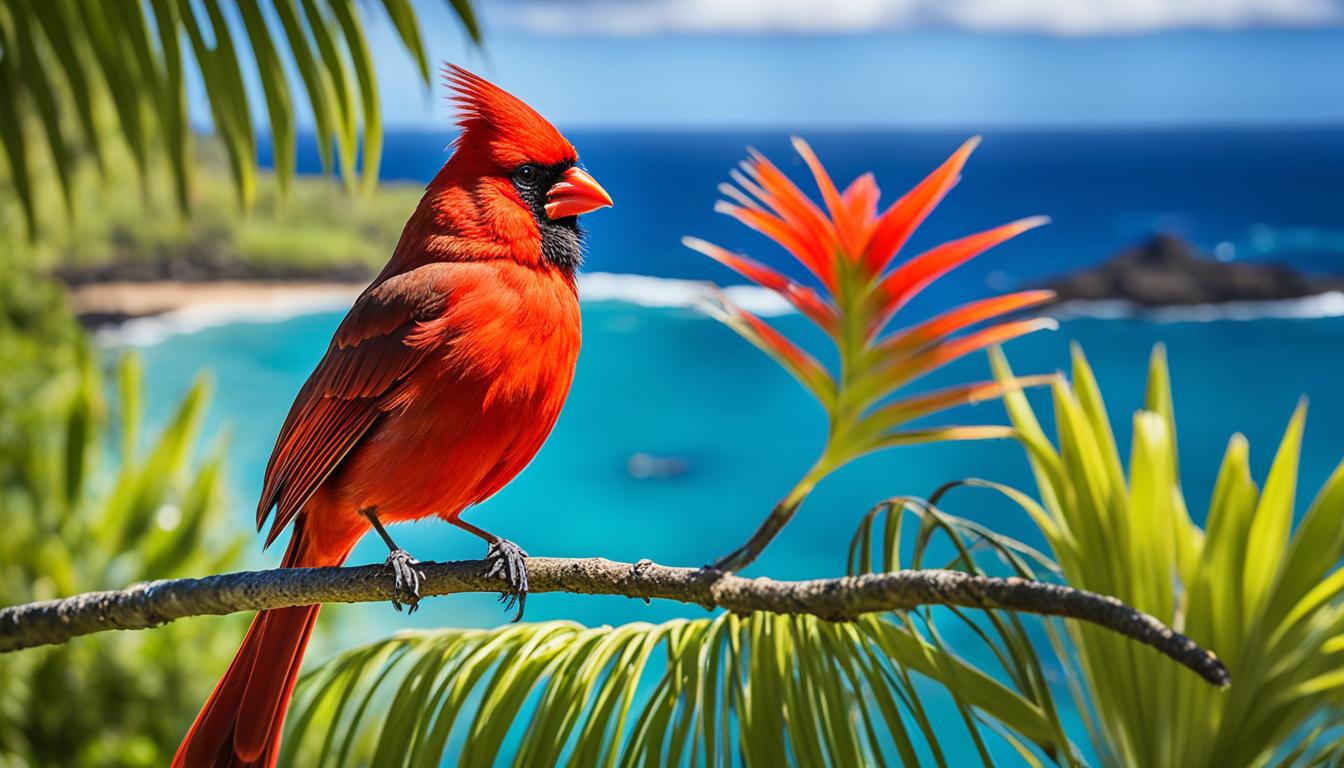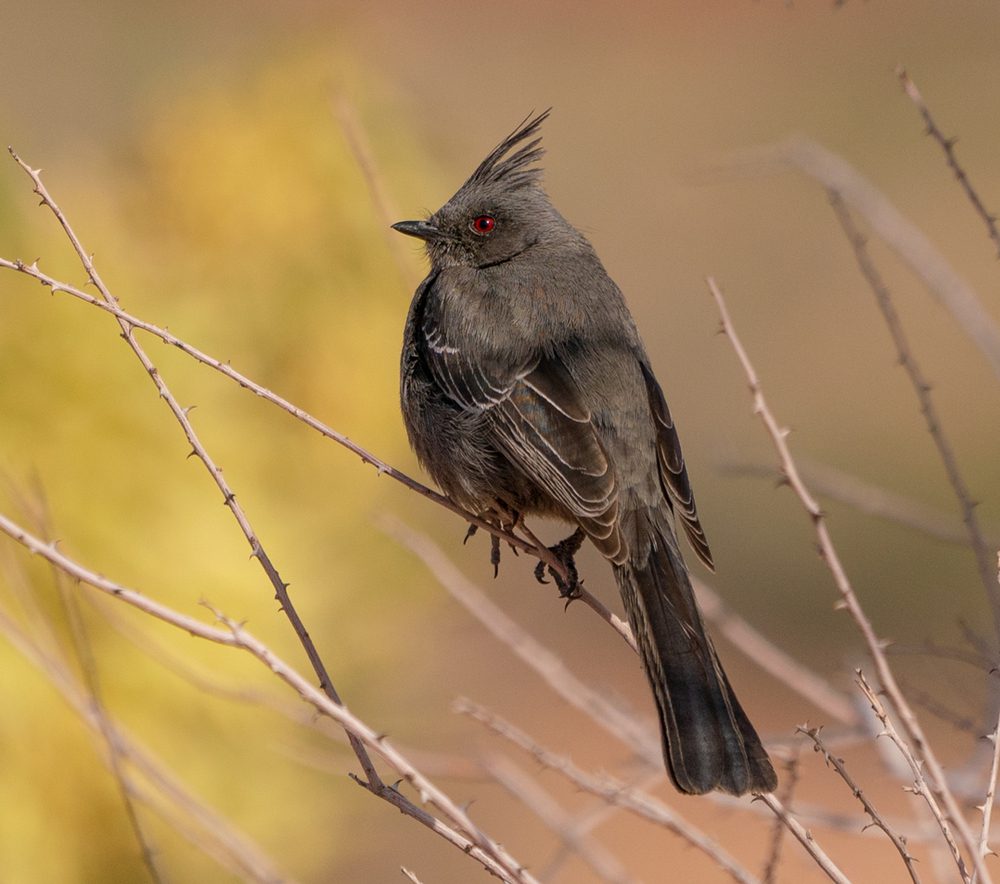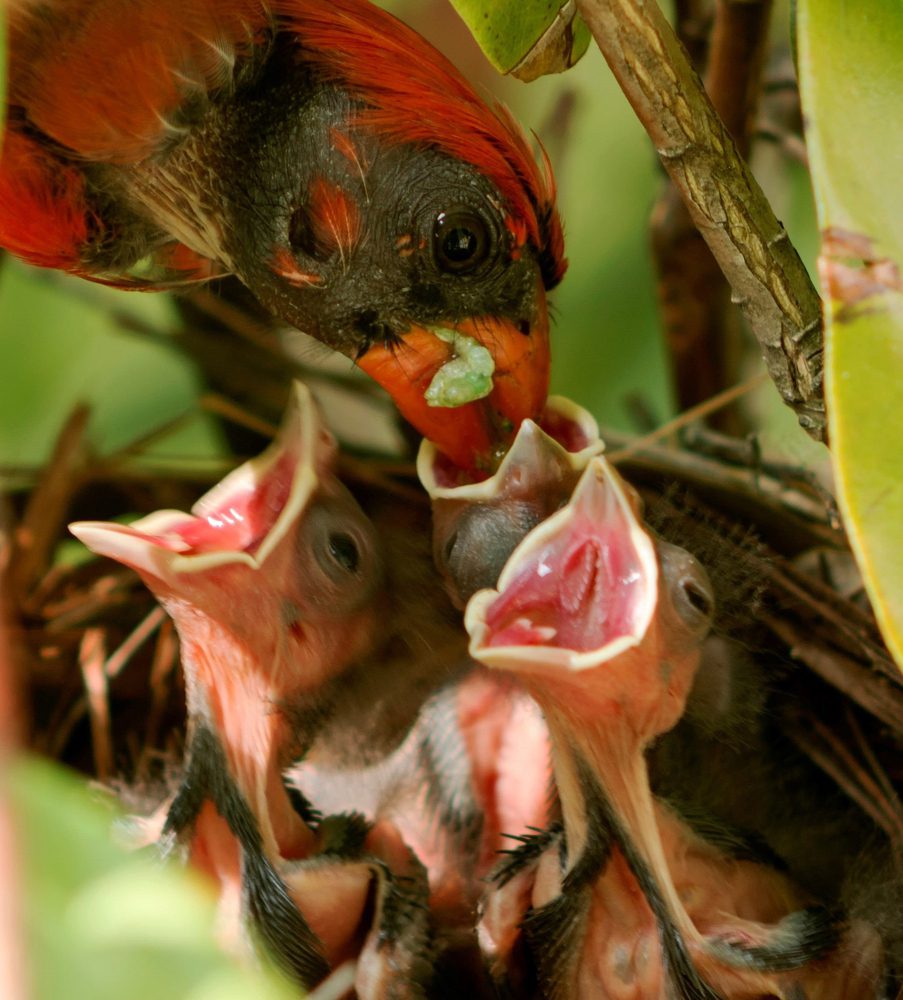Did you know that Colorado is home to a thriving population of turkey vultures? These fascinating birds are not only an integral part of the state’s ecosystem but also possess unique characteristics and behaviors that make them truly captivating.
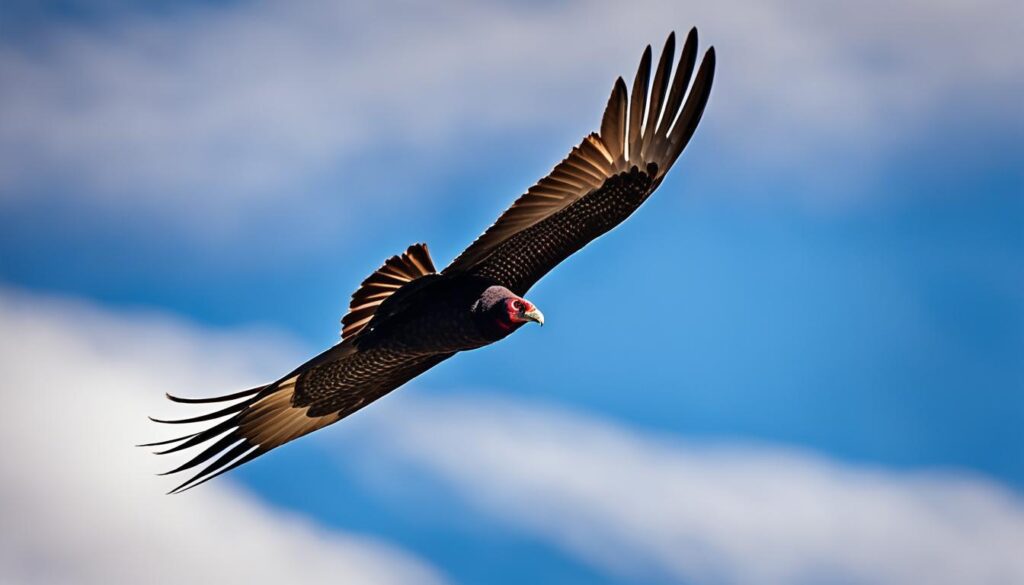
With their striking black wings and bald, wrinkled heads, turkey vultures are easily identifiable in the Colorado skies. But there is so much more to these scavengers than meets the eye. From their incredible soaring abilities to their impressive adaptations, let’s delve into the enchanting world of Colorado’s turkey vultures.
Key Takeaways:
- Turkey vultures are an important part of Colorado’s ecosystem.
- They have distinct appearances with black wings and bald, wrinkled heads.
- Turkey vultures exhibit unique behaviors and adaptations for survival.
- They can be commonly spotted soaring or perched in Colorado’s skies.
- Turkey vultures can be found in various habitats across the state.
Turkey Vulture Colorado Behavior and Adaptations
Turkey vultures are fascinating creatures with unique behaviors and remarkable adaptations that allow them to thrive in their environment. These scavengers have evolved specialized traits that aid in their survival and make them highly efficient carrion feeders.
“Turkey vultures exhibit behaviors and adaptations that help them thrive in their environment.”
Gliding Masters: Turkey vultures are skilled gliders, capable of soaring through the skies for extended periods without flapping their wings. This impressive ability allows them to conserve energy while scanning the ground for potential food sources.
Powerful Sense of Smell: Using their keen sense of smell, turkey vultures can detect the scent of carrion from several miles away. This remarkable olfactory capability enables them to locate food sources quickly and efficiently.
Sharp Beaks and Strong Stomach Acids: Turkey vultures possess sharp, hook-shaped beaks that are perfectly suited for tearing through tough hides and skin. Their powerful stomach acids can break down the tough proteins found in carrion, allowing them to access the nutrient-rich innards of their prey.
Effective Waste Disposal: The digestive system of turkey vultures is specially adapted to handle their scavenging diet. Their gut microbes efficiently break down and neutralize harmful bacteria and toxins present in carrion, acting as an effective waste disposal system. This adaptation prevents the spread of diseases and helps maintain the overall health of the ecosystem.
To summarize, turkey vultures have evolved unique behaviors and adaptations that enable them to excel as carrion feeders. From their soaring abilities to their exceptional sense of smell and specialized digestive system, these adaptations play a crucial role in their survival and make them an intriguing species to study and observe.
Turkey Vulture Sightings in Colorado
Turkey vultures are super cool birds that you can see a lot in Colorado. They have really big wings and fly in a special way, so you can tell it’s them from far away. These birds are like nature’s clean-up crew because they eat dead animals.
Watching turkey vultures can be really exciting if you love birds and nature. They glide through the air so smoothly and have some cool features that make them stand out. No matter if you’re in the mountains, flat lands, or even in the city in Colorado, keep your eyes peeled for these awesome birds.
I was in awe when I spotted a turkey vulture soaring through the Colorado sky. Its wingspan was incredible, and it glided effortlessly through the air. It’s truly a sight you don’t want to miss!
Where to Spot Turkey Vultures
Turkey vultures can be found in various habitats across Colorado, from forests and grasslands to open areas. They adapt well to both urban and rural environments. Look for them near areas with abundant carrion, such as roadkill or other sources of food.
Identifying Turkey Vultures
Recognizing a turkey vulture is relatively easy once you know what to look for. They have a distinctive silhouette with broad wings and a long, slightly hooked beak. Their heads are bald and wrinkled, with a red hue. These characteristics set them apart from other birds of prey.
Interesting Facts about Turkey Vultures:
- Turkey vultures are social birds and often gather in groups, called “committees,” when soaring in the sky.
- They have an excellent sense of smell, allowing them to detect carrion from a great distance.
- Unlike many other birds, turkey vultures do not have vocal calls. Instead, they communicate through hissing and grunting sounds.
- While they primarily feed on carrion, they may occasionally eat small live prey or consume plant matter.
So, the next time you find yourself in the great outdoors of Colorado, keep an eye out for these remarkable turkey vultures. Their presence in the sky is not only a testament to their survival and adaptability but also a reminder of the intricate balance within Colorado’s ecosystem.
Turkey Vulture Habitat and Distribution
Turkey vultures are super cool birds that can live in all sorts of places in Colorado. You can find them in forests, grasslands, and even open spaces. They’re not picky about where they live and can be found in cities and the countryside. These birds are smart when it comes to finding food; they love to eat dead animals, which is pretty easy to find, so they never go hungry. They need lots of open space to fly around, showing off their amazing skills in the air.
You can see turkey vultures everywhere in Colorado, from the beautiful mountains to the wide-open plains. People who live there, as well as visitors, get to see these birds all the time. It’s a great way to see how awesome and interesting nature in Colorado can be.
“Turkey vultures are exceptional in their adaptability to diverse habitats, making them a common sight in Colorado’s natural landscapes. Their ability to thrive in urban and rural settings demonstrates their resilience and flexibility.”
Turkey Vulture Conservation
Turkey vultures are really important for keeping our environment healthy, even though there are still plenty of them around. They are nature’s cleanup crew because they eat dead animals, stopping the spread of germs and keeping places clean. It’s super important to help protect these birds and the places they live to make sure they stay safe and healthy for a long time.
We can help turkey vultures by supporting groups that work hard to save the places these birds need to live, find food, and raise their babies. When we give money or volunteer for these groups, we’re helping to keep turkey vultures around and making sure they have what they need to live and help our environment. This way, we’re making a big difference in keeping both the turkey vultures and our surroundings in good shape.
Advocacy and education are also crucial aspects of turkey vulture conservation. By raising awareness about the importance of these birds and their role in the ecosystem, we can inspire others to join the cause. Promoting responsible waste management practices, such as proper disposal of carrion and reducing roadkill, can benefit not only the turkey vultures but also other wildlife species.
To further emphasize the importance of turkey vulture conservation, I am reminded of a quote by John James Audubon, an American ornithologist and naturalist:
“Nature is varied, as are her creatures. Never underestimate the significance of even the most understated beings. Each species has a role to play, balancing the delicate threads that weave our natural world.”
The Impact of Conservation Efforts
Conservation initiatives have shown promising results in safeguarding turkey vulture populations. By preserving their habitats and raising awareness about their importance, we can ensure the continued survival and thriving of these magnificent birds. Let’s take a look at the positive impact of conservation efforts on turkey vultures:
| Benefits of Conservation | Impact on Turkey Vultures |
|---|---|
| Protecting habitats | Ensuring adequate food sources and nesting sites |
| Advocating for responsible waste management | Reducing threats from roadkill and improper disposal |
| Education and awareness campaigns | Promoting recognition of turkey vultures’ ecological importance |
| Collaboration with local communities | Engaging stakeholders in conservation efforts |
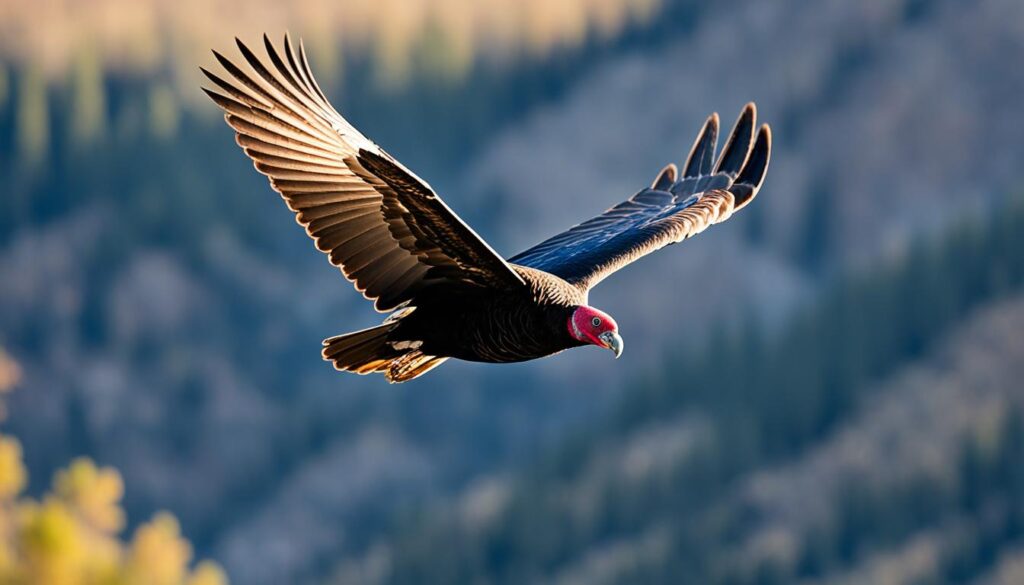
Turkey Vulture Diet and Feeding Habits
These birds eat dead stuff, like animals that didn’t make it, which can include anything from small mammals and birds to reptiles. They have a superpower that lets them find and eat these dead animals, which helps get rid of the bodies in a natural way.
You’ll often find turkey vultures munching on animals that were hit by cars or other easy-to-get meals. They have an amazing sense of smell that helps them sniff out their next meal, even if they can’t see it. By eating up these dead animals, turkey vultures help keep the environment clean and stop the spread of sickness.
What’s really awesome about turkey vultures is that they can eat stuff that’s rotting and not get sick. They have special good germs in their stomach that break down the bad stuff and kill off any nasty germs. This means they can safely eat things that would make most other animals very ill.
Turkey vultures act as nature’s sanitation crew, effortlessly removing dead animals from the environment and preventing the spread of diseases.
This remarkable adaptation not only enables turkey vultures to survive on a diet that would repulse many other creatures but also helps to maintain the overall health and balance of ecosystems.
Turkey Vulture Feeding Habits
When feeding, turkey vultures rely on their sharp, hooked beaks to tear through the hide and skin of their prey. Their powerful digestive acids further aid in breaking down the tough tissues, allowing them to access the nutrient-rich organs and muscles inside.
While they primarily feed on carrion, turkey vultures may also opportunistically scavenge at landfills or other areas where human waste attracts a variety of animals. This versatility in feeding habits allows them to adapt and thrive in both natural and human-altered environments.
It’s worth noting that turkey vultures are not equipped to kill live prey and exclusively rely on scavenging for sustenance. They are largely non-aggressive and pose no threat to humans, making them valuable contributors to the ecological balance in which they reside.
| Fact | Description |
|---|---|
| Dietary Preference | Carrion, including mammals, birds, and reptiles |
| Feeding Behavior | Scavenging |
| Specialized Adaptations | – Powerful beaks and digestive acids – Specialized microbes in the digestive system |
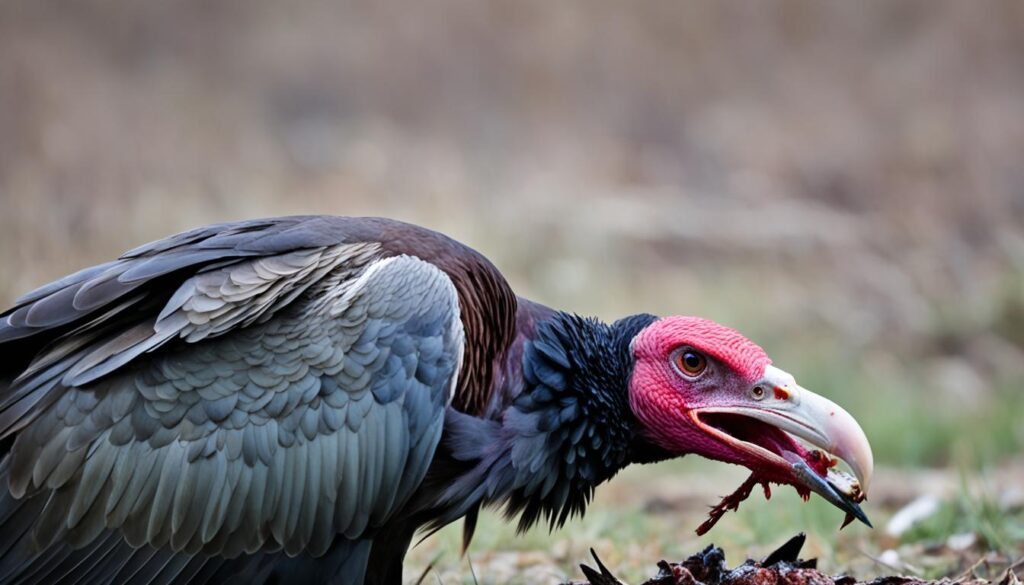
Understanding the diet and feeding habits of turkey vultures provides valuable insights into their role in maintaining ecological balance. By consuming carrion and efficiently disposing of dead animals, these remarkable scavengers contribute to the health and sustainability of their habitats.
Conclusion
Turkey vultures are really cool birds that fit in perfectly with Colorado’s mix of landscapes. They look different, act in special ways, and eat in a style that helps keep nature in balance there.
Even though they might not be as colorful as some birds, turkey vultures are super important. They are amazing at flying high in the sky over Colorado, using their big wings to float around easily and go far without getting tired.
When you see a turkey vulture flying way up high or sitting in a tree close by, stop and watch them for a bit. Admire how special they are and think about the important job they do in nature. They’re great at cleaning up waste and stopping the spread of diseases.
To wrap it up, turkey vultures show us how to be tough and flexible, making them an important part of Colorado’s bird world. They can live in cities or the countryside, showing they’re good at adapting. Let’s make sure we keep their homes and food safe for many years to come. You might want to see another turkey vulture in texas and illinois
FAQ
What do turkey vultures look like?
Turkey vultures have black wings and a bald, wrinkled head.
How do turkey vultures survive in their environment?
Turkey vultures have unique behaviors and adaptations, such as gliding and an incredible sense of smell, that help them thrive in their habitat.
Where can turkey vultures be found in Colorado?
Turkey vultures can be found in various habitats throughout Colorado, including forests, grasslands, and open areas.
Are turkey vultures endangered?
Turkey vultures are not considered threatened or endangered, but conservation efforts should still be promoted to protect their habitats and ensure healthy carrion populations.
What do turkey vultures eat?
Turkey vultures primarily feed on carrion, including carcasses of mammals, birds, and reptiles.

